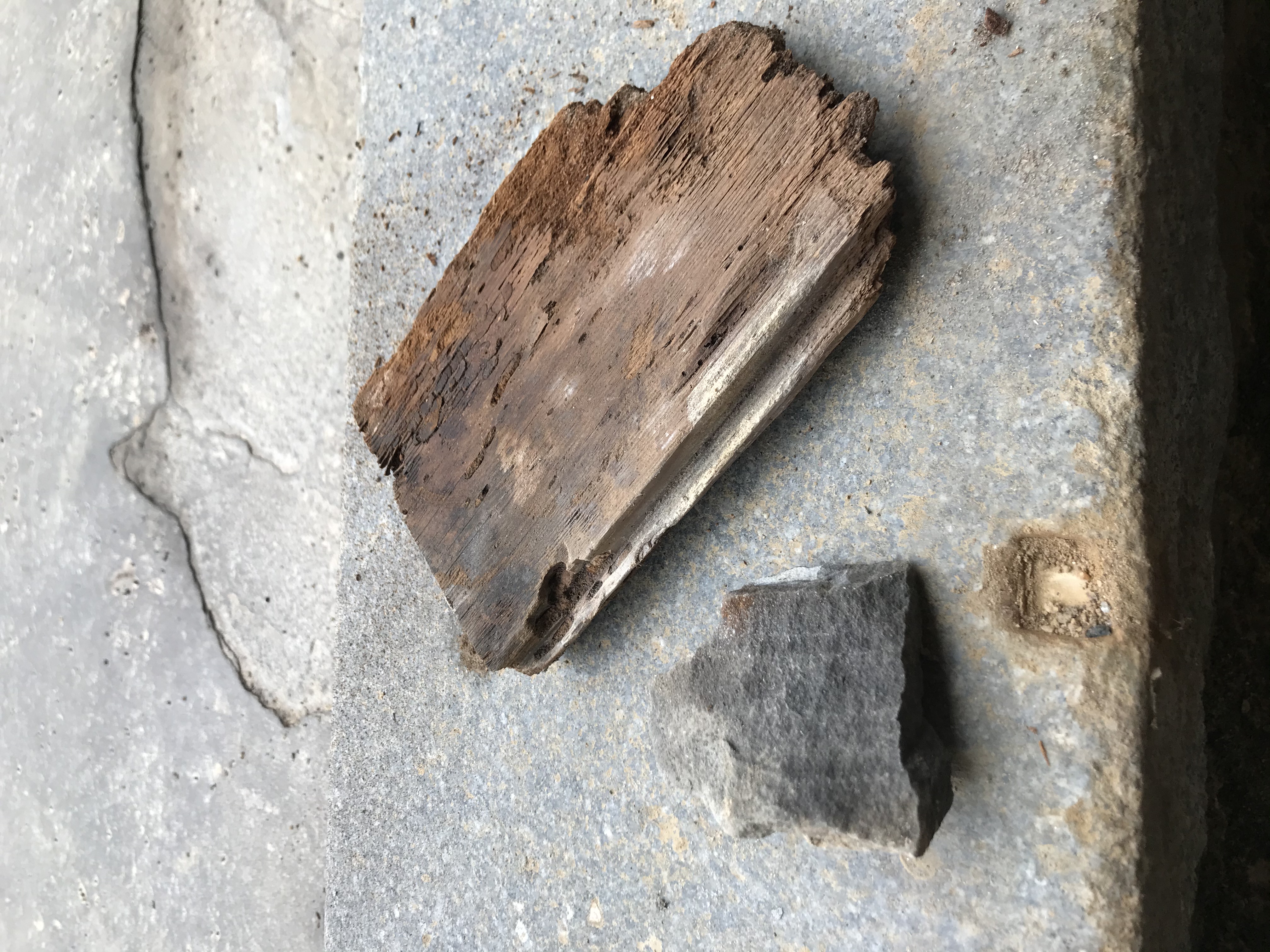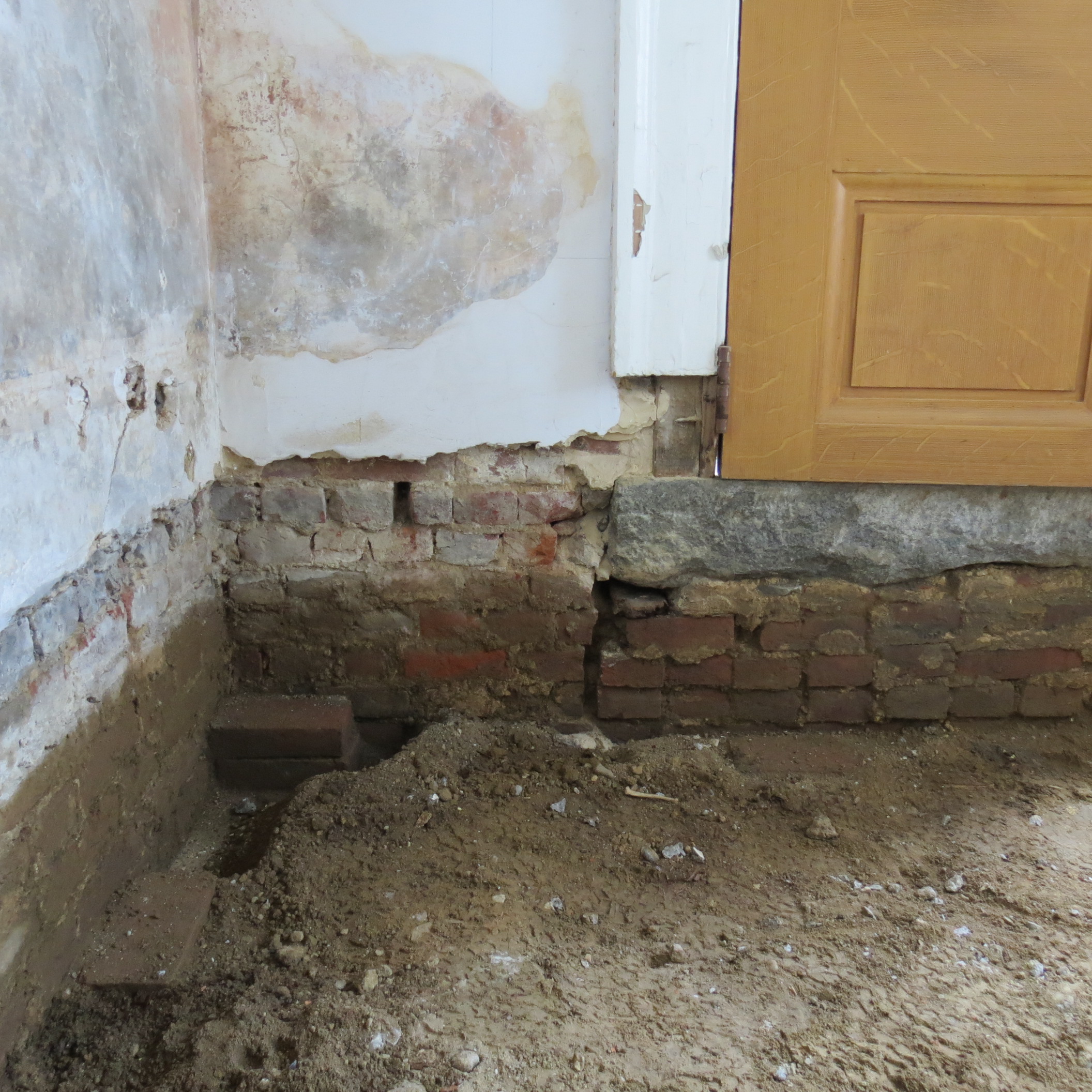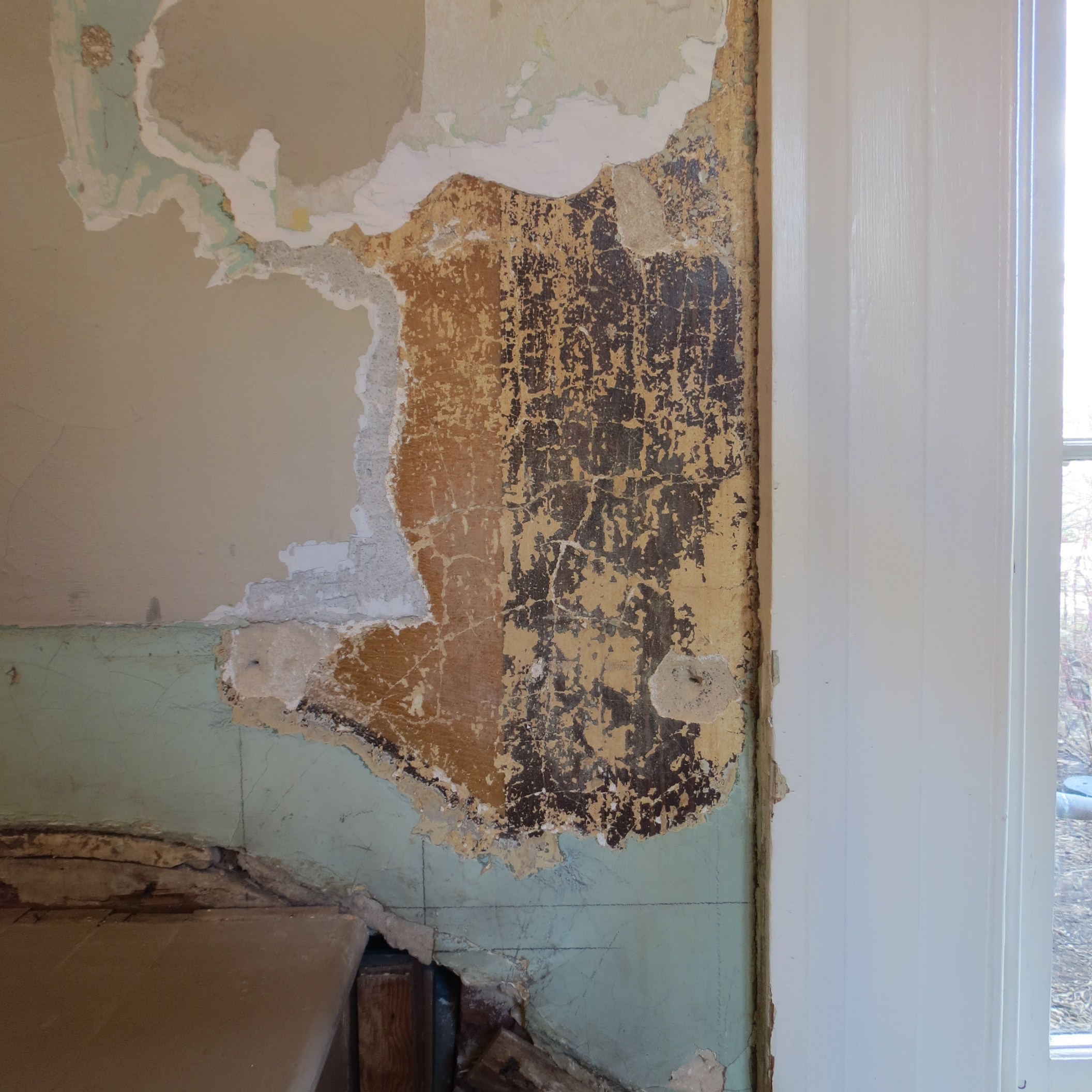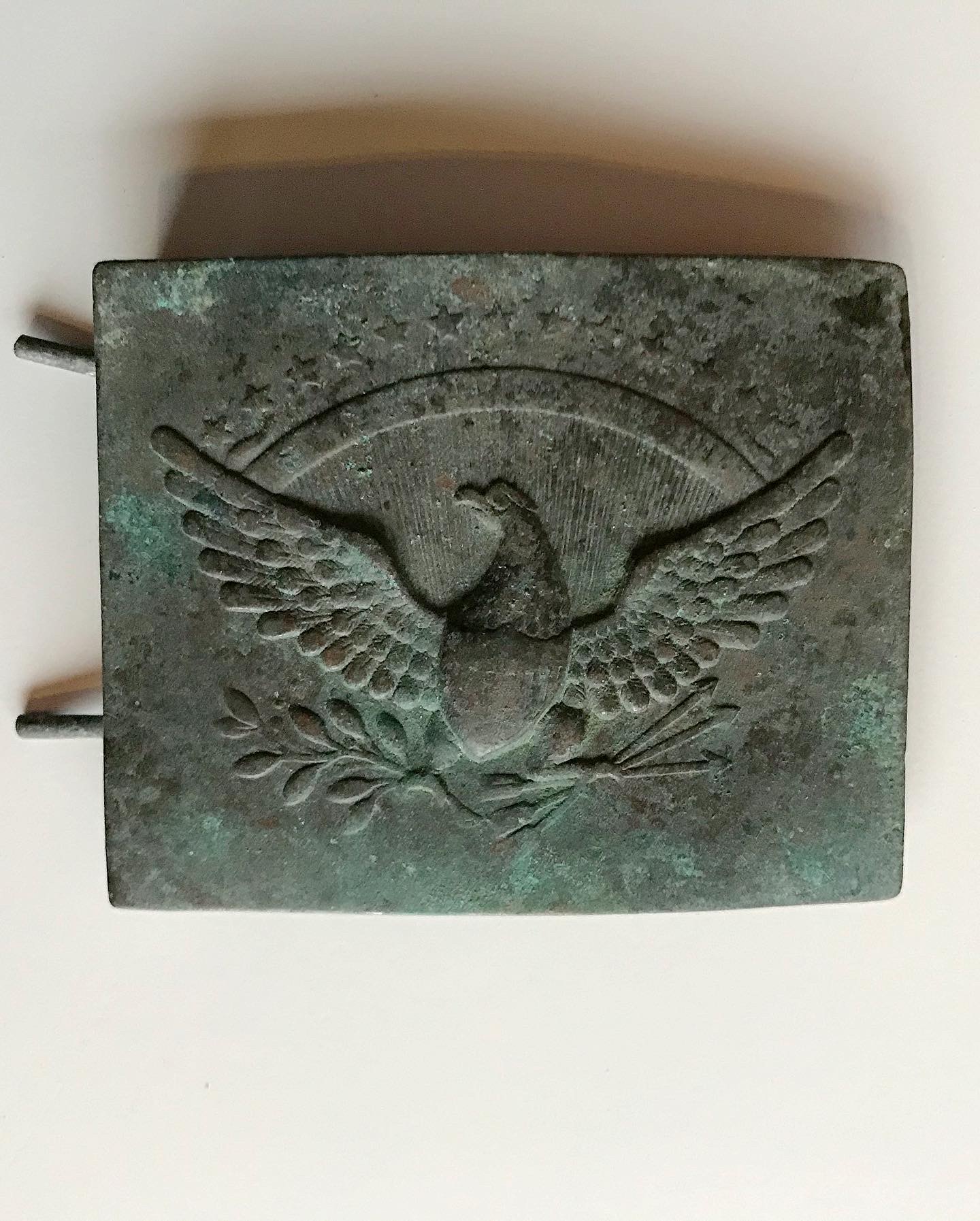
Recent efforts by our Senior Preservationist, Jeff Larry, to restore the Cottage vestibule have led to some interesting discoveries that have helped us understand how the vestibule may have looked during Lincoln’s time. May is Preservation Month and for this newsletter Jeff has put together his top five list of vestibule discoveries:
1.Doorbell Pulley
Hidden behind a panel on the door trim was a sash pulley that had been retrofitted to be used as part of a doorbell system. A visitor could announce their arrival by pulling a knob on the other side of the wall. The knob was attached to a wire which ran over the pulley and inside a metal tube down to the basement where a long lost bell would notify servants living or working in the basement that someone was at the door. 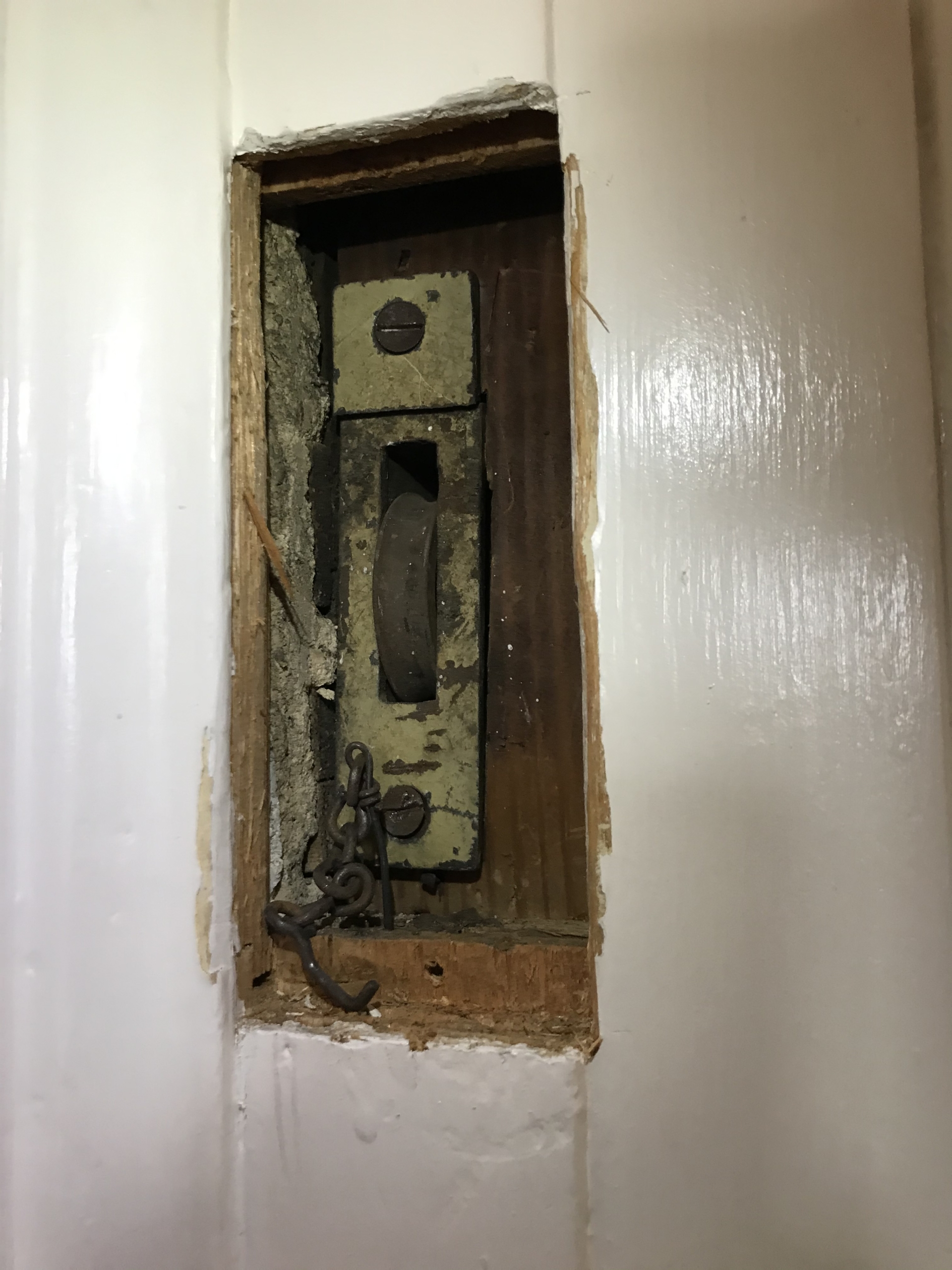
2. Waist Belt Plate
Discovered while excavating along the foundation beneath the vestibule stairs this brass waist belt plate (belt buckle) dates from 1815-1825! It’s not unusual for job site trash and debris to be used as backfill when refilling the trench that was dug to build the foundation. However, this waist belt plate appears perfectly intact so it is a bit of a mystery how it ended up in the ground over the summer of 1842!
3. Original Flooring & Threshbold
We knew of course that the concrete floor at the base of the vestibule stairs was not from Lincoln’s time. It was most likely installed in the late 19th/early 20th century. What we didn’t know was what type of flooring was there originally until we removed the concrete floor in early April. We found clear evidence of a wood framing system and pieces of the original tongue and groove flooring! We also discovered remnants of bluestone which most likely came from the original threshold.
4. Original Threshold
Note the different brickwork below the granite threshold. This was the location of the original bluestone threshold. The bricks were added when the new granite threshold and concrete floor were installed. This effectively raised the entire floor about 8”. That is why the bottom rail of the door looks so short – it was cut when the floor was raised!
5. Graining Exposure
Though we knew by the faded paint remnants discovered on the vestibule walls in 2007 that the decorative painting was meant to imitate wainscot (wood paneling), we didn’t know what type of wood was being portrayed until a conservator performed an exposure in 2014 (an exposure is when you carefully remove the layers of paint until you expose the historic layer you are trying to learn more about). We learned that the rails and stiles of the wainscot imitated walnut (the darker color) and the center panel was painted to look like white oak (yellow/orange area). Unfortunately the 2014 exposure did not clearly show the painted grain lines which is important if we want to replicate the style of the grainer. This picture shows an exposure that Jeff did back in January that confirms the types of wood, the lower rail of the painted wainscot curved with the stairs and, most importantly, a sufficient amount of grain lines to allow for a faithful reproduction!
